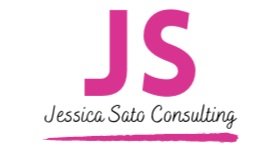Theory of Change: The Best Blueprint for Purpose-Driven Entrepreneurs
Over the last few months, I've been thinking about what it takes to create real impact in the world. Many of my clients are thought leaders in their space, actively seeking to shift the narrative and common practices in deeply entrenched spaces. Their work goes beyond simply making money.
They are actively creating change.
And change doesn't come by doing things the way they've always been done.
When it comes to building, growing, and scaling a business that has social change at the forefront of its mission, traditional business strategy won't work.
That may seem bold, but over the next couple of weeks, I want to show you exactly why I believe this, describe what a Theory of Change is, illustrate the power it holds in creating transformational change, as well as provide you with practical tools to implement this approach on your own. I'll take you step by step through the entire process - from setting your core business and impact objectives and identifying the necessary strategies to monitoring progress and making necessary adjustments.
So, whether you're looking to bring about change in your local community or on a global scale, this series will arm you with the knowledge and strategies you need to turn your vision into reality.
Understanding the Theory of Change
Before we dive in, let me take a second to define what a Theory of Change is. This may be a touch academic, so bear with me. I promise to keep the rest of this blog post super practical.
The Theory of Change (ToC) is a comprehensive description and illustration of how and why a desired change is expected to happen in a particular context. It's focused not just on generating change, but on understanding the underlying assumptions which guide the design of complex social change programs.
Simply said, this theory forms the basis of strategic planning, providing a clear roadmap of where you want to go and outlining the steps necessary to get there. It helps business owners identify the appropriate action steps and shape how success can be measured and change can be documented.
In essence, the ToC serves as a powerful and comprehensive roadmap for your business as it outlines the steps necessary to reach your ultimate impact and revenue goals.
Crafting Your Theory of Change
The first step in harnessing the ToC involves laying out your ultimate goal. As a thought leader, visionary, or purpose-driven entrepreneur, this goal often aligns with solving a pressing issue.
One of my clients is actively changing the way we support families who have a loved one with substance use disorder.
Another client is helping feminists, social activists, and nonprofit organizations tell their stories through books.
In my own business, I seek to make it possible for women globally to use their unique skills, voice, and expertise to create opportunities for themselves and others through entrepreneurship.
Having a solid understanding of WHAT change you're trying to create is the most foundational piece of the puzzle.
Once you understand the impact you want to make, the ToC guides you in identifying the steps necessary to reach it. It encourages you to dig deep to better understand the space you're working in, the underlying assumptions, and bring others, particularly those who are affected by the work you're doing, into the process.
For instance, if you're a solopreneur running a small, eco-friendly fashion brand with a goal of decreasing your environmental footprint, you would dig into the problem to better understand the way you can best do that. It might look like reducing textile waste in your local community by repurposing discarded textiles and turning them into fashionable, wearable art. In order to do that, you could collaborate with local recycling centers, host clothing drive events, and invest in the equipment needed to create high-quality, recycled products.
Or, perhaps you run a service-based business like mine. I'm passionate about fostering female entrepreneurship because I strongly believe it uniquely affords women opportunities they wouldn't otherwise have, especially as global demographics shift and employment opportunities shrink.
My ToC prompts me to actively seek ways to equip and support women with the knowledge and tools necessary to successfully build and grow businesses. This goal means I have to:
Understand the social and cultural context in which women live, especially if they're outside the United States.
Carefully consider the kind of services I offer, some of which include hosting workshops on business strategy, confidence building, marketing and sales, etc.
Identify collaboration and power partners to increase our respective professional networks, visibility and impact.
This hands-on, tailored approach empowers women, giving them the tools they need to succeed in their entrepreneurial endeavors.
Your business's Theory of Change not only helps you set these objectives but also guides you in identifying the strategies needed to achieve them.
Your Journey Towards Meaningful Transformation
In upcoming posts, we'll delve deeper into how the Theory of Change works. We'll discuss how you can practically set objectives, manage stakeholders, monitor your progress, and adapt your plans when you experience a little VUCA.
Remember, as a purpose-driven entrepreneur or small business owner, you are a visionary and a change-maker. Traditional methods of business strategy won't help you bring about the positive change you wish to see in the world, but your Theory of Change will.
If you have any questions about the Theory of Change, drop them in the comments below. I can't wait to hear from you!



